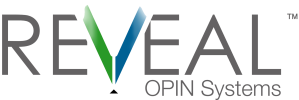There’s a lot of turnover in the workforce right now
Over one-third of the workforce will reach retirement age in under 15 years—when the last baby boomer turns 65. Meanwhile, overall participation in the labor force by 16- to 64-year-olds is down over 7 percent. Generation X and Millennials are less satisfied with staying in one place with one company for forty-odd years.
This all adds up to most companies (and probably yours) experiencing more turnover than ever before. And the turnover will only increase as the baby boomers continue to retire and the
Not only is your company losing employees who may have been around for thirty-plus years, but your company may also have a hard time finding someone who can replace the retirees easily.
New employees are wasting time trying to figure out undocumented processes
Whether employees leave for a different job, change careers, or retire, there’s a good chance that they’ll leave before anyone figures out how to do those particularly complex tasks they did on their own.
It’s hard to be in this situation. Depending on the task and employee, there may not be much you can do when it comes up now. But you can prepare for the next similar situation.
Five questions to ease employee onboarding and training
1. What processes aren’t easy to replicate?
You may not realize how complicated an employee’s task is until you get stuck helping the new employee figure it out. Having someone shadow employees every once in a while will help you determine which processes are the most complicated.
By periodically assessing employee processes, you can identify key complicated processes. To increase efficiency, compliance, and accuracy, you might streamline or automate them.
2. What kinds of knowledge do your employees use daily?
Does one employee spend loads of time using social knowledge—such as knowing which subject matter expert to contact about a malfunction?
Or does the employee use head knowledge to perform tasks that you can write out in a process or demonstrate in a video?
Or does the employee frequently use tacit knowledge in many processes, requiring a new employee to repeatedly attempt the processes alongside the veteran employee in order to grasp them?
Most employees will likely use a combination of all three of these types of knowledge. Your knowledge-transfer strategy will vary greatly depending on the kind of knowledge you want to transfer. One of the best ways to transfer social and tacit knowledge is to have the new employee shadow the veteran employee for anywhere from 90 days to 2 years. Head knowledge, on the other hand, you can transfer with a coherent document or training video—it’s just a matter of creating it.
Your list of which tasks aren’t intuitive will help you decide which ones to develop a knowledge transfer strategy for first.
3. What concerns employees?
If you suddenly start requiring senior employees to train lower-level employees, they might worry about their job security. Of course, employees nearing retirement might not be as worried about this as employees hoping to stay with your company for another 10 years.
Try to frame all of your actions and new requests about knowledge transfer in a way that ensures employees will continue to feel valued and needed. Many retirees would love the chance to leave behind a legacy or give back to the company.
Employees who aren’t retiring or thinking about leaving the company might be the most alarmed. They’ll need the most persuasion to set aside time to create (or even to allow someone else to create) training materials. Try to use these situations as a learning experience: they’ll help you see how you might improve your employee relationships. Consistently praising employees for their hard work can help them feel valued and motivated to give back to your company.
4. What action plans do we need to improve?
Depending on the kind of knowledge (social, head, or tacit), the knowledge transfer and training might look different each time.
Sometimes, you’ll be able to assign a new employee to shadow a retiring or departing employee. In order to transfer as much of their social, head, and tacit knowledge as possible, they might work together for a year or so.
Other times, you may want to have a complicated procedure documented by a third party to prepare for an employee’s extended leave of absence. Or maybe the employee isn’t leaving, but management wants to check whether the process is as efficient and consistent as possible.
5. Why aren’t we doing this now?
When you know what processes you want to document, and you’ve decided how you’re going document them, it’s time to actually do it. Dole out the different steps of recording the process to the appropriate people.
For example, maybe you want to find out exactly how payroll is processing billable hours. You might have a new employee shadow the employee in charge of processing billable hours a couple times. The new employee and the veteran employee could then record how the process works. They could compare and reconcile the differences between their documents. Then they could format it as an official training document. If the process is too complicated to explain, you could hire a company to create a training video. The training video might consist of screen captures, a voice over, and a brief interview with the veteran employee.
How you can start a knowledge transfer now
- Track down a senior employee who has worked a particular process to the point that he or she understands it backward and forward. Try to find someone eager to leave a legacy or give back to your company before leaving.
- Interview the employee to find out what kind of pivotal knowledge he or she uses for important business processes. Remember, tacit and social knowledge take more time to transfer than head knowledge.
- Determine how to transfer the employee’s knowledge. Ask the employee what kind of transfer he or she would be willing to do. This might be mentoring, shadowing, or training videos and documents.
Keep learning:
- http://www.amanet.org/training/articles/Effective-Knowledge-Transfer-Can-Help-Transform-Your-Bottom-Line.aspx
- http://blog.stevetrautman.com/you-are-here-knowledge-transfer-defined/
- http://www.forbes.com/sites/chriscancialosi/2014/12/08/6-key-steps-to-influencing-effective-knowledge-transfer-in-your-business/#3aee45124948
- http://quickbase.intuit.com/blog/how-to-document-your-current-processes-in-10-easy-steps
- http://www.pcmag.com/article2/0,2817,2418808,00.asp
- https://hbr.org/2014/12/whats-lost-when-experts-retire
- http://appel.nasa.gov/2006/01/01/preserving-deep-smarts-at-nasa/
- https://cdns3.trainingindustry.com/media/16389331/onboarding_and_knowledge_transfer_report_v3.pdf
Free guide: 5 steps to create successful knowledge transfer materials

